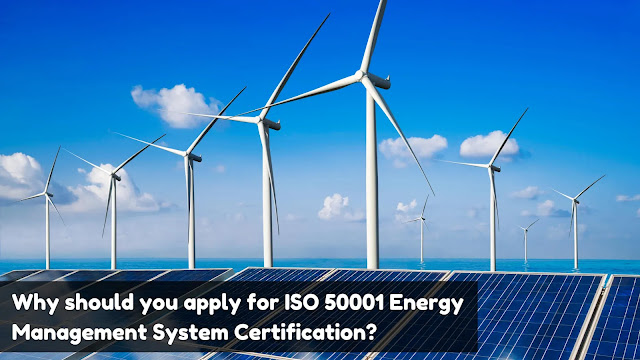ISO 14001 Standards: The Source to Reveal Ecological Significances
Depending on their type and size,
businesses in Sri Lanka cannot serve the same purposes. They demonstrate
various moods among clients as they provide a variety of services and strive to
be more effective. But they might be able to improve their success in their
jobs and markets by just adhering to a few rules.
The equilibrium of the environment cannot
be changed. Any company in Sri Lanka, however, is able to follow the guidelines
set out by the International Organization for Standardization. This is possible
by adhering to the correct ISO
14001:2015 Standard standards.
The procedures and other methods used to
achieve ISO 14001 Certification indirectly encourage positive and healthy vibes
in the workplace, industry, and surrounding. The principles outlined by the ISO
14001 Standards aid in the efficient development of the Environmental
Management System (EMS) framework.
Implementing the ISO
14001 Environmental Management System (EMS) is the main goal of
adhering to ISO 14001 Compliance. It offers companies a framework for
developing, putting into practice, maintaining, and continuously enhancing
their environmental performance.
Seven Proven Steps That Assuredly Bring Environmental Sustainability
The following steps are involved to bring
better Environmental Management with the help of ISO 14001 Certification:
1.
Adopt a policy for the environment in accordance
with ISO 14001 certification
An organization must develop and publish a
clear environmental policy expressing its commitment to environmental
protection, compliance with applicable laws, and pollution prevention. The
observance of environmental rules can elevate the reputation of your business.
Enterprises may meet and surpass environmental regulations with the help of ISO
14001.
2.
Help Your Business to Develop an Effective
EMS-Based Plan
In order to evaluate possibilities and
risks associated with their operations, products, and services, companies must
plan in order to comprehend their environmental impacts and aspects. They
should set goals and targets and develop a plan to achieve them in order to
improve their environmental performance.
An organization's commitment to
transparency and accountability in environmental management is demonstrated by
its ISO 14001 Certification.
3.
Implementing Functions of ISO 14001
Certification
Utilizing ISO 14001
promotes sustainable practices, waste reduction, pollution prevention, and
resource efficiency, which helps businesses improve their environmental
performance.
The purpose of this phase is to determine
how to implement the Environmental Management System. The steps are as follows:
● Fulfilling legal environmental duties:
● Putting in place policies to address
environmental problems;
● Establishing operational controls; educating
personnel;
● Emergency preparedness is covered in full
4.
It's Time to Check and Make Corrections.
Organizations should adhere to ISO 14001
Certification in order to measure and frequently monitor important
environmental indicators. They are required to monitor development and ensure
adherence. Organizations should carry out ISO 14001 Audits (Gap Analysis and ISO
14001 Internal Audit) to identify areas that require improvement and
manage non-conformities.
Businesses are encouraged by ISO 14001 to
assess how they utilize resources, energy, and waste. The requirements for ISO
14001 Certification give a foundation for incorporating employees in
environmental management activities.
5.
Make the Management Review of ISO 14001
Certification your Goal.
Top management should regularly examine the
EMS to assess its effectiveness and make any necessary adjustments. In order to
complete this evaluation, the organization's environmental sustainability must
be evaluated. Changing conditions must also be taken into consideration, and
the system's ongoing appropriateness and sufficiency must be guaranteed.
An organization's well-respected ISO 14001
accreditation demonstrates its commitment to environmental care. The ISO 14001
Certification may offer a competitive edge. Businesses may proactively identify
and minimize environmental hazards with the help of ISO 14001.
6.
Better Cost Management
In Sri Lanka, an Environmental Management
System can save money by boosting output, cutting waste, and better-managing
resources. The cost of the ISO 14001 EMS depends on the following elements: the
required training; the level of expertise of the hired personnel; the size and
type of the company or business; the required number of consultants and other
resources.
In the end, ISO 14001 could help businesses
save money and protect the environment, which is good for everyone. The goals
for achieving environmental sustainability are laid forth in ISO 14001 EMS.
7.
Embrace Ongoing Improvement
This concept is strongly emphasized in the
ISO 14001 standard. Organizations should work to reduce their negative
environmental effects. This may be done by setting new objectives, putting new
concepts into practice, and involving new parties.
External feedback and knowledge gained from
earlier experiences should be included to help the EMS grow. The ISO 14001
Certification is what opens up new market opportunities and commercial
opportunities. Thanks to ISO 14001, environmental performance keeps getting
better.





